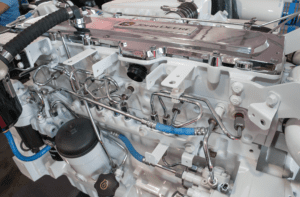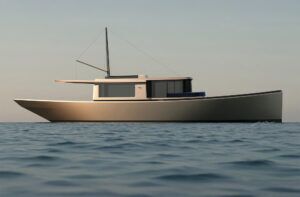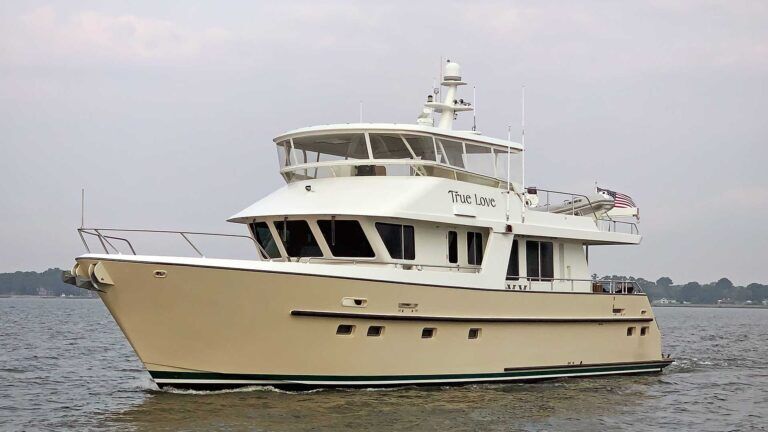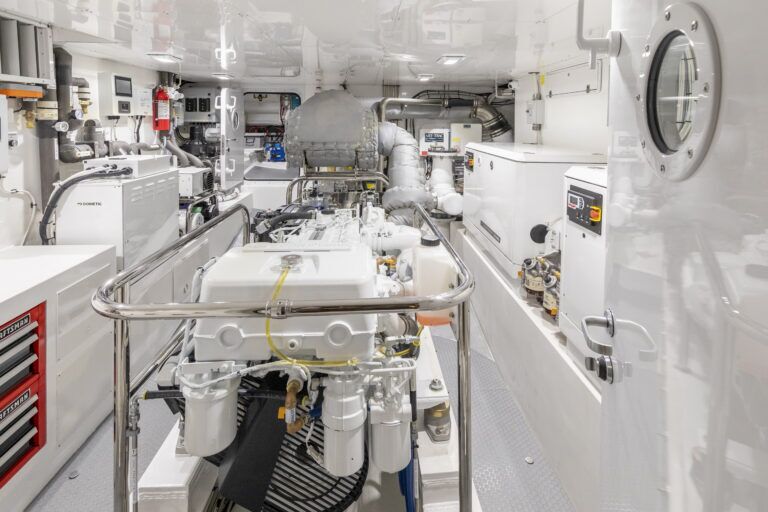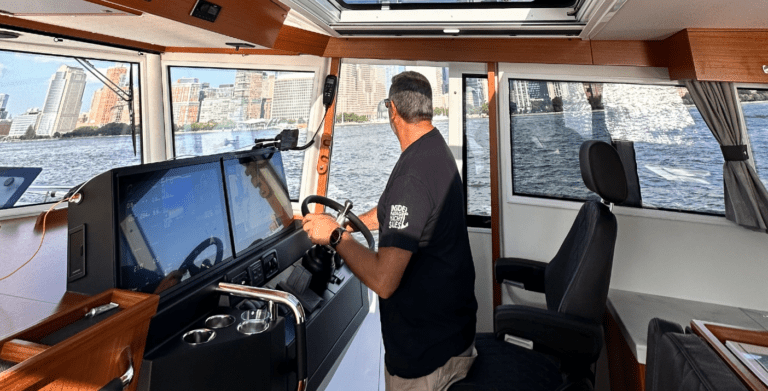The Straight Poop
Admit it. That headline got you. You’re going to read this story because you’re curious, maybe even a bit voyeuristic, about onboard human waste.
Yup; a few years ago we installed a composting head on our boat, and we’ve used it enough now to reach some conclusions.
Having been endowed with an excellent sense of smell, I don’t like holding tanks. Eventually, the stink leaks out through the hoses or whatever, and I smell it. Small boats are worse than big boats because the tanks tend to be closer to where I’m usually sitting.
I also don’t like breaking the law—in this case, the one that prohibits pumping sewage overboard in inshore waters. Following that law is particularly important as I represent boating magazines, which like to be seen as champions of the environment.
My first solution to these problems was to purchase and install a U.S. Coast Guard-approved Electro Scan sewage treatment system from Raritan Engineering, purveyors of marine toilets and accessories. Now, I can pump overboard with a clean conscience, except in federally designated no-discharge zones, where nothing may be discharged, no matter how clean. (See below: “No-Discharge Zone Rant.”)
The problem is, I live in Florida, home of the Florida Keys, a cool cruising ground, but also a no-discharge zone. My second solution was to install a composting head, which is a Coast Guard-approved Type 3 marine sanitation device, like a holding tank. My boat had two heads, one with the Electro Scan and the other, rarely used, with a 12-gallon holding tank. So, not only did replacing the raw-water toilet with a C-Head composter legalize a no-pump-out cruise through the Keys, but eliminating the traditional holding tank created additional stowage forward.
Admittedly, having two heads gave us the flexibility to experiment. I don’t think I would have had the courage to switch to composting had we only one toilet.
Desiccation
Two brand names that cruisers prefer for composting toilets are Nature’s Head and Air Head, which appear to be fine products. I chose C-Head because I liked its looks, it sits at about the same height as the conventional toilet it replaced, it was significantly less expensive than the others, and the manufacturer is about an hour away from where I live on the St. Johns River.
The key to success with a composting toilet is that poop and pee enter separate compartments, which requires users to maintain good posture when making their deposits. The solids mix with a composting medium such as peat, hamster bedding or organic kitty litter, which is churned with a crank handle after each use to accelerate drying. Desiccation can be accelerated further by installing a vent, something I have yet to do.
To be accurate, a composting head only begins the composting process, which off-the-grid types finalize by moving the mix to separate containers for further aging. We just emptied the waste mix into doubled plastic bags and disposed of it ashore, which is legal in most places the same way disposing diapers and bagged pet waste is legal. And, of course, it can be legally dumped directly overboard (sans the plastic bags) if your boat happens to be more than 3 miles offshore.
Urine diverts into a standard 1-gallon milk jug, to which we added a couple sprays of pet odor neutralizer after each use.

Crisis
Success. We locked down the high-tech head and cruised the Keys and down to Cuba without having to have a single pump out. The C-Head did not stink like sewage, not at all. There was a slight musty odor, which my keen snout found inoffensive. One gross thing did happen, however, but it wasn’t the toilet’s fault. Cruising the Keys, we were beset by pestilence.
Maggots infested the solid waste compartment, and it was pretty yucky. This episode was entirely avoidable by following the manufacturer’s advice to incorporate a standard No-Pest Strip and throw a couple mothballs into the mix. Dealing with a thousand squirming fly larvae in my toilet was a punishment to fit the crime.
My crew once described our composter as a “kitty litter box with an ice cream churn handle.” Which explains why, after each use, I found myself resisting a mysterious urge to scratch, scratch, scratch on the woodwork.
My No-Discharge Zone Rant
I am not opposed to no-discharge zones, per se. An enclosed basin with a shellfish industry—for example, Nantucket Harbor—should be protected from the ill effects of human waste. Period. Paragraph. End of story.
But while big, deep, fast-flowing bodies of water such as Buzzards Bay or Puget Sound might need protecting, they don’t need to be protected from recreational boaters. And yet, both have been designated no-discharge for reasons best described as quasi-religious in nature. It’s environmental zealotry.
The issue is not that a no-discharge zone prohibits raw sewage from being dumped into a waterway, though it does. It’s the fact that no-discharge zones also prohibit discharging the contents of a U.S. Coast Guard-approved treatment system. The processed outflow from these modern systems is often more free from pathogens than the body of water into which it is being pumped, but apparently this does not matter.
Last year, tens of millions of gallons of untreated sewage were pumped into Florida waters because of antiquated and inadequate municipal treatment facilities. And my state’s infrastructure problem is not unique. Your state may be just as bad.
So let’s say you’re cruising the Florida Keys (my no-discharge zone of choice), dutifully depositing your waste into a holding tank and getting a regular pump out. From the pump-out facility, the waste enters the municipal sewage system and goes to the local, antiquated or inadequate treatment plant. In the afternoon it rains buckets, which happens a lot in Florida, and the treatment plant overflows, like it always does, sending another 50,000 gallons of untreated or undertreated waste into Keys waters. Most of it comes from homes and hotels; a tiny bit from the holding tanks of boaters.
What exactly was gained by preventing us from discharging from our onboard treatment systems? Nothing. Government lacks the will to modernize our sewage infrastructure because it would cost a lot of money to do so. Unable to act effectively, government then creates the illusion of action by targeting boaters. I call bull.



